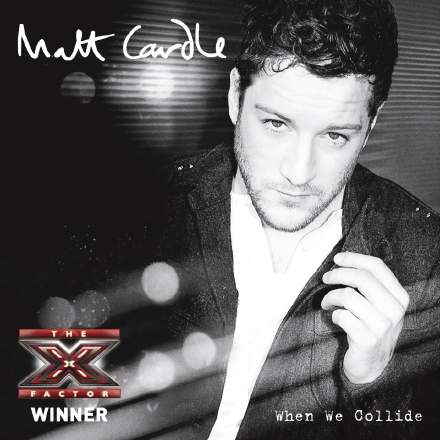
Whether you’re a fan of The X-Factor or not, there’s a lot to learn from this UK Christmas number one, if only by referencing against the great opening vocal sound — warm, breathy and intimate, despite the gale-force pitch-correction. While we’re talking about the opening, let me also draw your attention to savage low-frequency filtering of the acoustic guitars. Although it’s hardly the most natural of sounds (unless you live in a doll’s house), it’s nonetheless very effective in context, giving the impression of an acoustic guitar in the arrangement, while staying out of the way of the clean electric guitar and lead vocal in the low-mid range. Indeed, I’d hazard a guess that the lead vocal wouldn’t make nearly the sonic impact it does if such harsh EQ measures had not been taken.
Another aspect of the mix that rewards close scrutiny is the warm and beautifully controlled low end, when the drums arrive at 0:24. Although the bass is powerful in the 100Hz region, it rolls off from about 70Hz, leaving the bottom couple of octaves all but free for the kick drum to deliver a satisfyingly weighty oomph, all the way down to 30Hz or so. If you filter out the sub-100Hz region, however, it’s clear that the kick drum still has plenty of higher frequencies with which to punch through, while the LF restrictions placed on the bass (and, indeed, the rest of the mix) ensure that the rest of the balance suffers very little. All in all, this makes for a great compromise between achieving good small-speaker compatibility for chart purposes, and capitalising on the bandwidth extremes for car, hi-fi, and home-theatre listeners.
The biggest challenge of mixing an ‘all guns blazing’ pop arrangement like this, though, is generating a convincing build-up without losing drum/vocal clarity, or running out of headroom. The kick drum keeps its head above water on account of its low-frequency dominance, and also by interacting with the bus compressor — effectively indicating its presence by ducking the whole mix subtly on each hit. The snare can’t work these same angles, but nonetheless manages to remain dominant in the mix throughout. There are several reasons for this. Firstly, it’s got a very sharp and prominent attack, which slices through the mix fairly effortlessly. Secondly, this attack is followed by a short, but extremely dense sustain, lasting roughly 80-100ms. I wouldn’t be surprised if this was achieved by layering in some kind of parallel gated effect, but whatever it is, it allows the drum to retain its sense of body in the face of increasingly powerful frequency-masking effects, as everything including the kitchen sink is piled into the arrangement. Thirdly, the reverb treatment helps to increase both the drum’s effective duration and its reach across the stereo field — a tactic that becomes applied more assertively as the overall texture thickens, and which has the beneficial side-effect of increasing the mix’s overall sense of size and width at those points.
As I’ve already mentioned, one factor that aids the vocal clarity is careful EQ bracketing of other parts, but I’m guessing that the possibilities of this method were exhausted before an adequate balance for the choruses could be achieved. I can hear a fair amount of ducking of background parts such as guitars and strings in response to the vocal, whether by triggered dynamics, fader automation, or both. Some of this is quite mild, but occasionally it does get quite extreme, such as under the lead vocal’s word ‘if’ at 1:06 in the first chorus. (Interestingly, this ducking instance only really appears to affect the stereo ‘Middle’ component — perhaps there’s some sneaky M/S processing going on?)
So far, there’s much to admire, but I confess to being rather less impressed by how this mix uses the available digital headroom. I’m not squeamish about loudness-enhancement processing, but here it’s taken too far even for me. To my ears, the sound already begins to suffer unacceptably from hitting the digital endstops at the downbeat of the second chorus (2:00). The kick drum simply folds in on itself and practically disappears, where I’d have wanted it to solidly underpin that important section’s arrival. My guess is that the mix engineer had nothing to do with the loudness processing in this case, otherwise I reckon he might have done something more to compensate for it by adjusting the mix balance. As for the middle section (2:33-2:65), the distortion created by pushing the peak-to-average reading below 5dB is pretty unpleasant, not least because the generally clean-sounding instrumentation doesn’t do much to mask it. Even on my grotbox speakers, it sounds like someone has accidentally nudged the radio’s tuning dial! Of course, once the middle section has maxed out both the possibilities for increasing the instrumentation and loudness, the only thing left to lift the final chorus is the traditional arranger’s admission of defeat: stepping up a key.
Personally, I know Ash Howes best for his work with Dido and Alisha’s Attic, and it’s very interesting to compare this Matt Cardle mix with Dido’s ‘White Flag’, which I have on my own reference CD – it’s another track with a very effective and controlled low end, as well as wafer-thin acoustic guitars. (It’s also a good example of how to allow the vocal to take up a huge amount of space in the mix.) And if you need evidence that Ash Howes is perfectly capable of great long-term mix dynamics (whatever the mastering engineer might do to them further down the line), check out Dido’s ‘Hunter’, which is brilliant – not least for the great drop chorus at the end.










